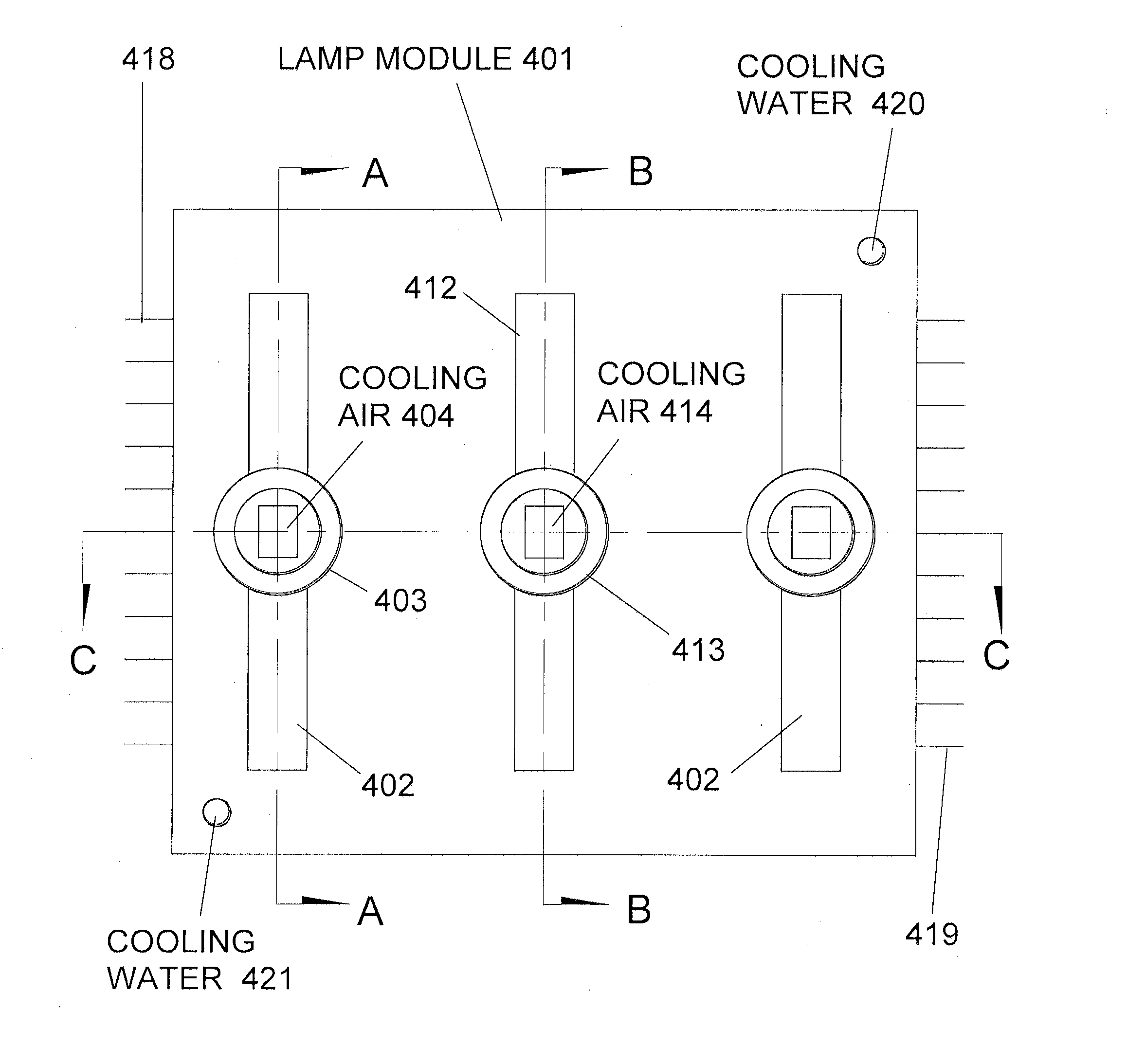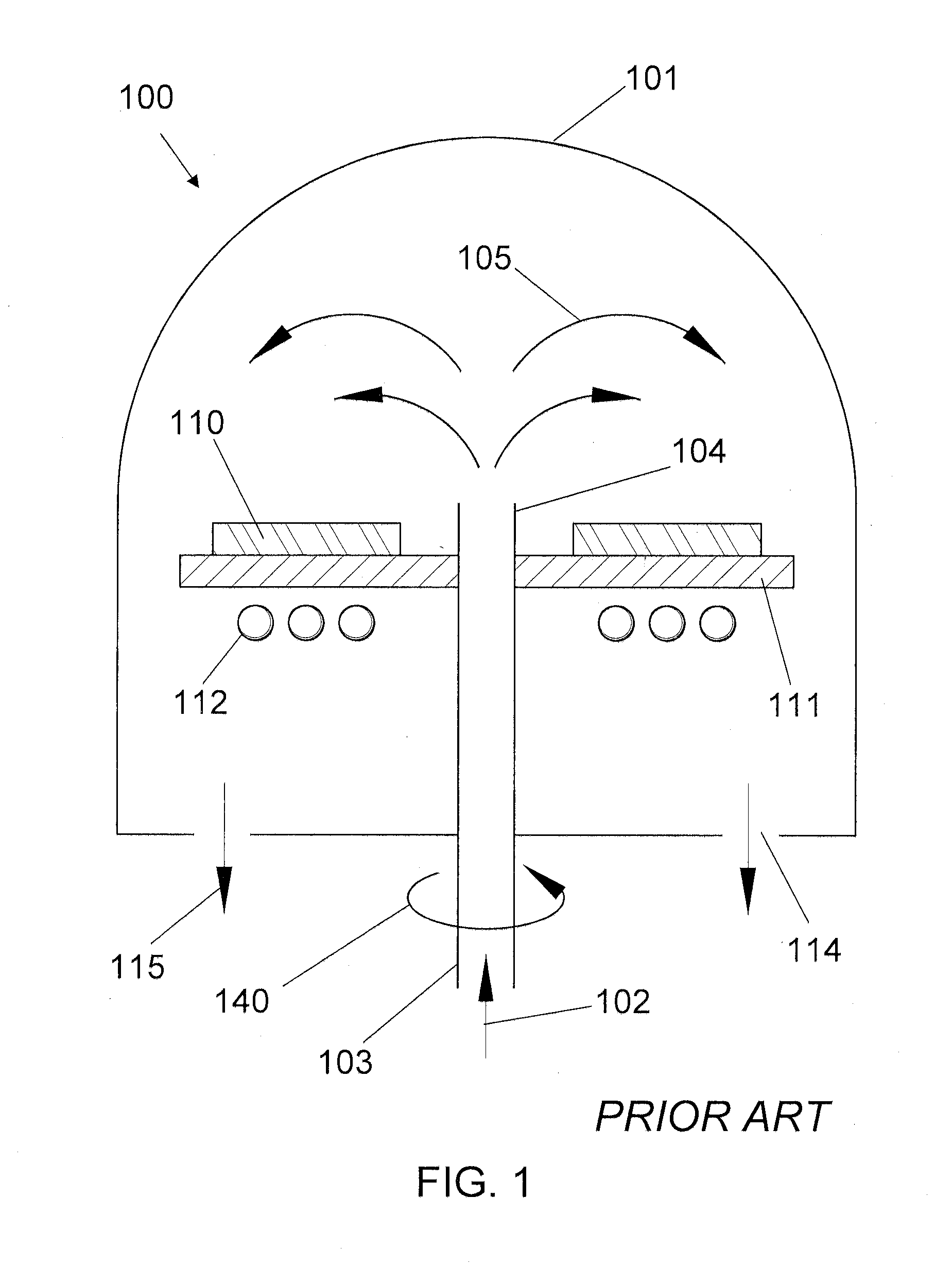High throughput multi-wafer epitaxial reactor
a technology of epitaxial reactor and high throughput, which is applied in the direction of crystal growth process, polycrystalline material growth, chemically reactive gas, etc., can solve the problems of wafer warpage, poor uniformity, and low throughput, and achieves simple reactor chamber, enhanced film deposition uniformity, and enhanced uniformity.
- Summary
- Abstract
- Description
- Claims
- Application Information
AI Technical Summary
Benefits of technology
Problems solved by technology
Method used
Image
Examples
Embodiment Construction
[0055]One disadvantage of prior art epitaxial deposition systems for PV cell applications is low throughput, measured in wafers per hour. Thus, it would be desirable for an epitaxial reactor to process a large number of wafers in parallel with the minimum deposition time practical to still achieve the desired properties in the deposited films on PV solar cell wafers.
[0056]Accordingly, one aspect of the present invention includes an epitaxial reactor enabling the simultaneous deposition by chemical vapor deposition of films on a multiplicity of wafers, each supported by a carrier plate heated by an array of lamps mounted within a reflector assembly. The epitaxial reactor of the present invention comprises one or more lamp modules which irradiate a wafer sleeve contained within a reactor frame which also supports the lamp modules. The following figures describe the lamp module, wafer sleeve, and reactor frame separately. Next, the assembly of a reactor module is described, followed by...
PUM
| Property | Measurement | Unit |
|---|---|---|
| diameter | aaaaa | aaaaa |
| diameter | aaaaa | aaaaa |
| reaction temperatures | aaaaa | aaaaa |
Abstract
Description
Claims
Application Information
 Login to View More
Login to View More - R&D
- Intellectual Property
- Life Sciences
- Materials
- Tech Scout
- Unparalleled Data Quality
- Higher Quality Content
- 60% Fewer Hallucinations
Browse by: Latest US Patents, China's latest patents, Technical Efficacy Thesaurus, Application Domain, Technology Topic, Popular Technical Reports.
© 2025 PatSnap. All rights reserved.Legal|Privacy policy|Modern Slavery Act Transparency Statement|Sitemap|About US| Contact US: help@patsnap.com



